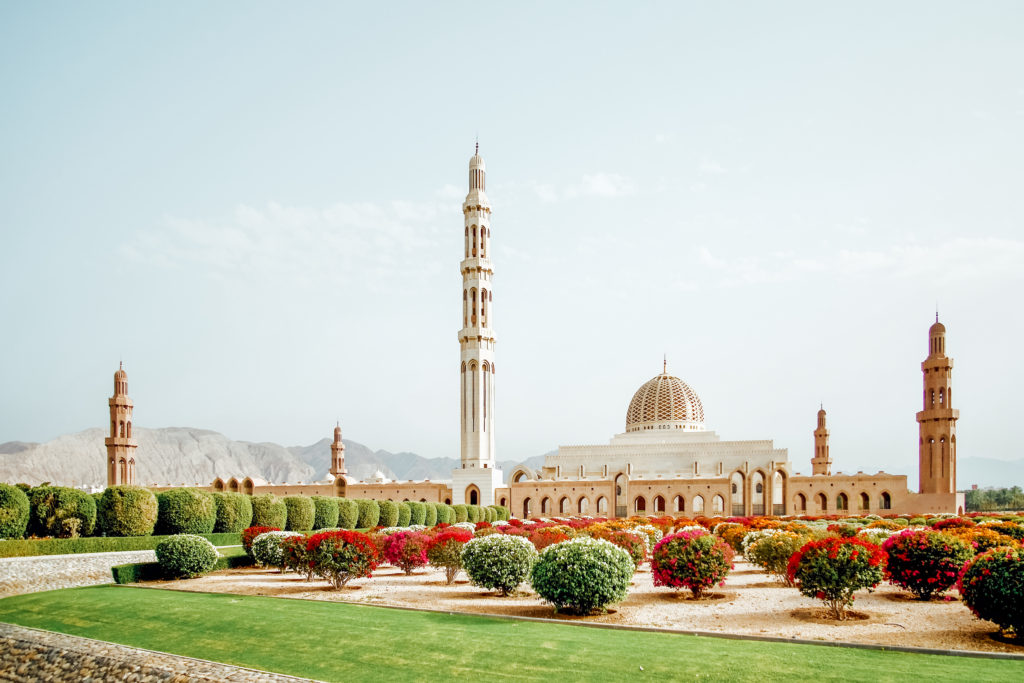
When most people think of Oman, they think of the desert, the wadis and the souqs. And it certainly has all of those. But beyond the gorgeous mosque, friends and family often have very little impression of what the capital city, Muscat, is like. It has a much slower pace of life than it’s glitzier neighbours, and when we first moved here I found it hard to get a sense of the city – there isn’t a clearly defined ‘centre’ in the way there is in many capital cities.
I hope this guide will give you a glimpse into life in this Arabian city, and maybe persuade you to add a few days on to your Omani adventure to soak it up.
If you are visiting Oman on a short trip, I recommend a day in Muscat at the start of your visit to set the scene with the cultural sights, and then a few days at the end in one of the five star beach hotels to recuperate after an jam-packed road trip.
Visitors to Oman must now apply for a visa in advance – you can get an e-Visa online. They are valid for 30 days and prices vary depending on how soon you wish to travel. Brits coming for less than 14 days can travel visa free, with proof of accommodation and return flight.
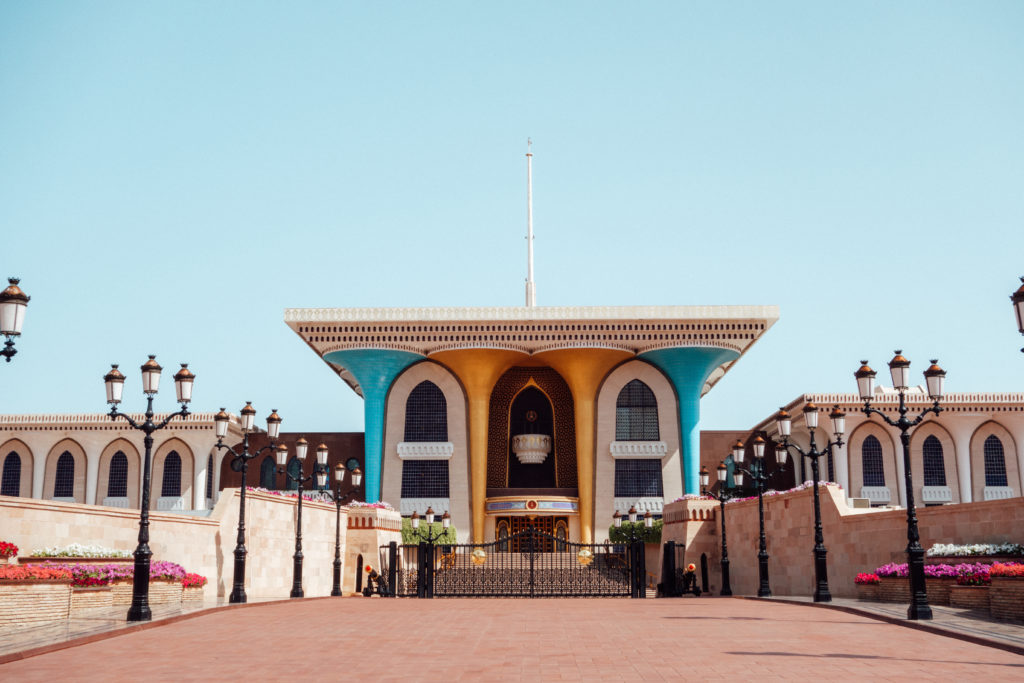
Don’t Miss
Sultan Qaboos Grand Mosque – built to celebrate the thirtieth year of the late Sultan Qaboos’ reign, it is one of the few mosques in Oman non-Muslims can enter. And it is stunning!
National Museum – fourteen galleries over 13,700 sqm. The building itself is beautiful, and the exhibitions provide an insight into Omani culture and history.
The beach – Muscat is basically a long strip of low, white-washed buildings sandwiched between mountain and sea, so there are lots of beaches to enjoy. Qurum Beach stretches for 2.5miles (4km) along the centre of the city, whilst further out of town camping at Bandar al Khiran is a must.
Brunch – brunch is a way of life in the Gulf. My Muscat favourites include Nana’s or the Turkish House for something more laid back, and The Chedi or The Bustan for over the top indulgence.
Key Facts
Language Arabic
Currency Rials
Nearest Airport Muscat International (MCT)
Getting Around Rental car or taxis. Whether you want a 4WD or a 2WD will depend on your itinerary in Oman.
Staying in Touch Omantel and Ooredoo have 24-hour booths in the arrivals hall at the airport. Omantel offers better coverage in the remoter parts of Oman, but Qatari-based Ooredoo has cheaper data packages and wider coverage across the Gulf.
Weather October–April is pleasantly warm (25-30C), although nights in December and January can be chilly. Summer (May–August) is extremely hot and very humid – daytime temperatures are a scorching (and pretty unbearable) 45-50C.
GETTING HERE
Muscat International Airport is increasingly well served by international routes. There are direct flights to a number of European capitals. Regional connections are good, and the short 90 minute flight to the major transport hub of Dubai means few places are out of easy reach.
Alternatively, you can arrive in Oman via the land border with the UAE. It is about a five hour drive from Muscat to Dubai. Drugs, guns, porn, and pork products should be left at home – it is illegal to bring them over the border. You can bring two litres of alcohol per person if entering Oman by air, but it is illegal to bring it in by land.
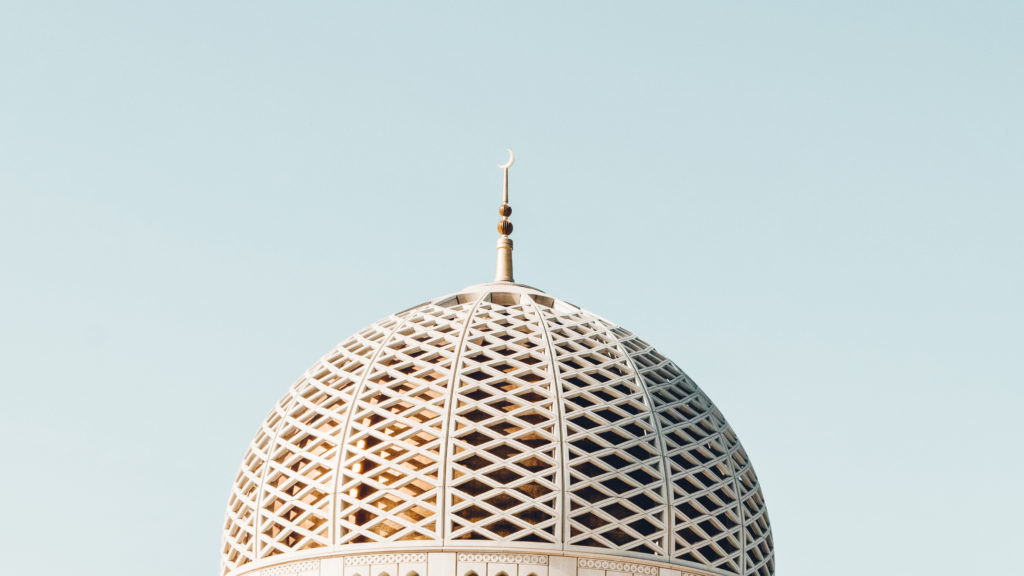
GETTING AROUND
Renting a car is by far the best option – it gives you the flexibility to go where you want, when you want. There are a number of options with direct collection at the airport, or others who will deliver a car to your hotel for minimal extra charge. Car rentals are big business here – many of the Omanis rent cars regularly to try new models – so shop around on comparison sites and you are likely to find a good deal. Where you want to go on your Oman trip will determine the vehicle you need – if you want to go further afield a 4×4 is best, but in Muscat a small city car will be fine.
Taxis from the airport are metered, and will cost you around 20 OMR to the city centre. Mwasalat taxis are red and white and are metered – the rate is 1.200 OMR per kilometre. A Mwasalat taxi app can be downloaded. Most other Muscat taxis – orange and white – are unmetered so you should fix the rate before getting in.
What to Wear in Oman
Probably the most frequent question I am asked by friends and family visiting Muscat!
As with any Muslim country, you should dress modestly but there is no need for a headscarf, nor to cover up entirely. When out and about clothes should not be too form fitting, low cut or see through, and must cover shoulders and knees. This applies to both men and women. If you are visiting a mosque you need to be fully covered from the wrists to the ankles, and women must cover their hair.
Fines of between 100 OMR and 300 OMR (£200-£600) can be issued to those not covering knees and shoulders in public places, but more often than not you will simply be asked to cover up. Many tourist sites have a display board setting out the expected dress code, in both English and Arabic.
In resorts you can dress as you wish, but you will be asked to cover swimwear whilst walking around the hotel. You may also find people dress up more for dinner in the resorts than elsewhere in the world, as in Muscat a number of the hotel restaurants are favourite choices for a special occasion or weekend treat.
Omani women wear abayas (long black cloaks) and head scarves. They also have the most fabulous collection of shoes! Men wear a dishdasha (an ankle length white robe, known as a thobe elsewhere in the region). Dishdashas have a small tassel attached to the collar, designed to be dipped in perfume. Omani men also wear an embroidered cap (kumma) or a turban.
WHAT TO DO
MARVEL AT SULTAN QABOOS GRAND MOSQUE
If you can only do one thing in Muscat, it should be a visit to the mosque! It is one of the few mosques in Oman that non-Muslims are permitted to enter. Both men and women must cover their arms and legs (to ankle and wrist), and women must also cover their hair.
Built in 2001 to mark 30 years of the late Sultan Qaboos’ reign, everything here is superlative. The 70m by 60m handwoven, central carpet was the longest in the world until the Emiratis pinched that title. It took Iranian weavers four years to complete. The chandelier in the men’s prayer hall is 14m high, holding 600,000 Swarovski crystals and 24 carat gold plating. It was the largest in the world until the Emiratis also took that prize!
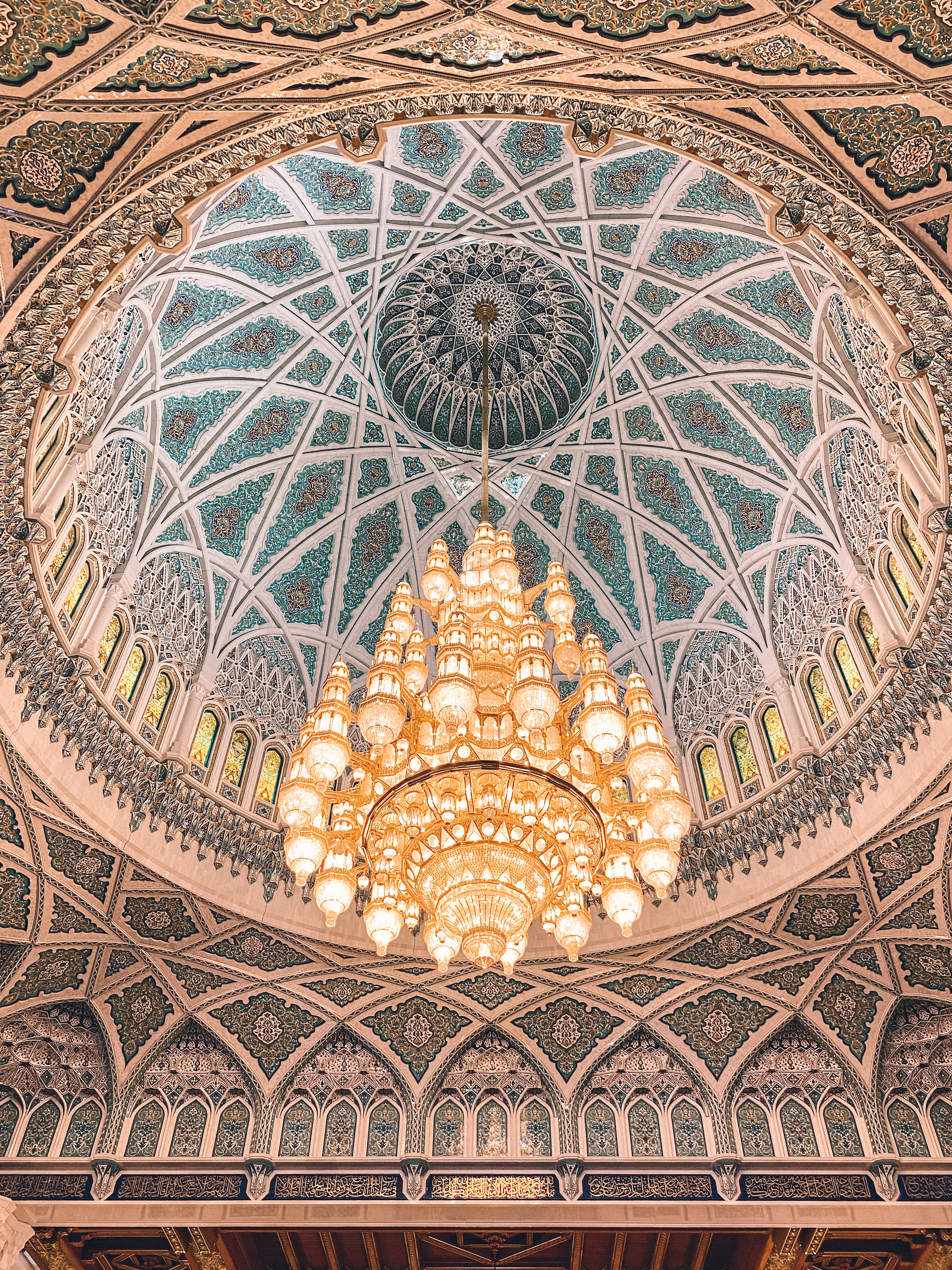
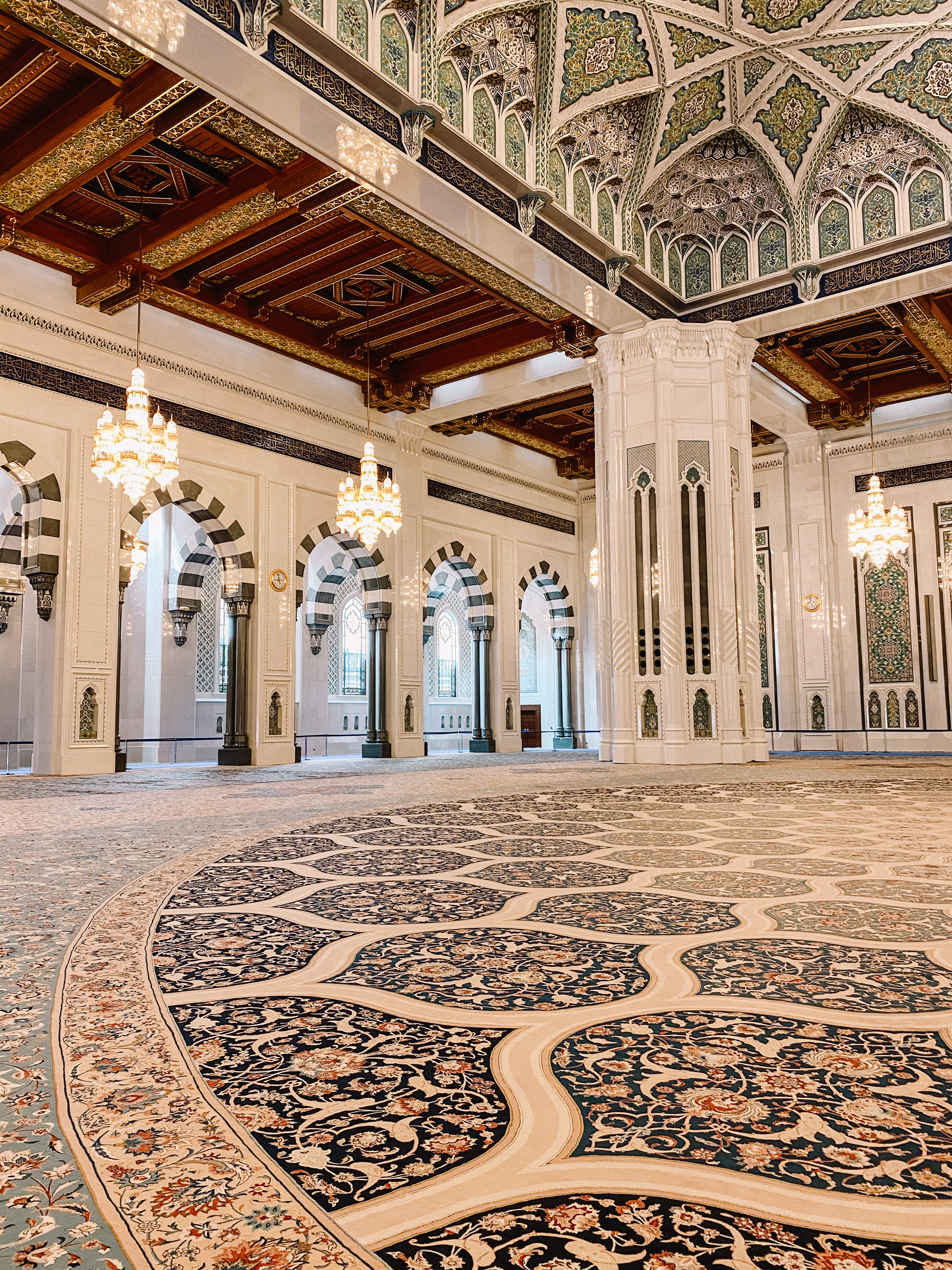
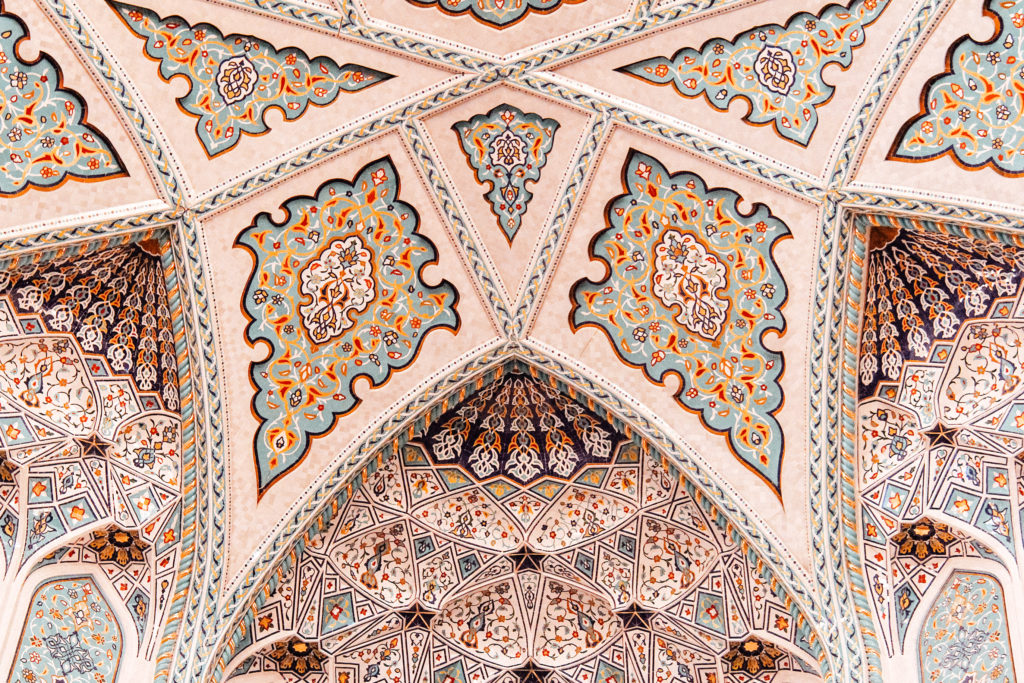
When we first visited I expected the mosque to be impressive, but I did not expect it to be quite so incredibly beautiful. Despite all the gleaming marble and the glitzy chandeliers, the atmosphere is more serene than ostentatious. It is also a photographer’s dream, with the simple symmetry of the architecture combined with the intricate details offering endless angles and patterns. The riwaqs (porticos) along either side of the mosque are decorated with niches displaying intricate painted tiles from across the Islamic world, and the mosaics in the main prayer hall are simply gorgeous.
If you are only able to do one thing in Muscat, I really urge you to make it a visit to the Sultan Qaboos Mosque. The tour buses tend to arrive around 9am, so if you get to the mosque when it opens at 8am you can spend a tranquil hour strolling through the white marble corridors and courtyards. Breakfast at Dukanah Cafe (more below) afterwards makes for a lovely, Omani, morning.
(Open for non-Muslims daily, except Friday: 8am-11am. Free.)
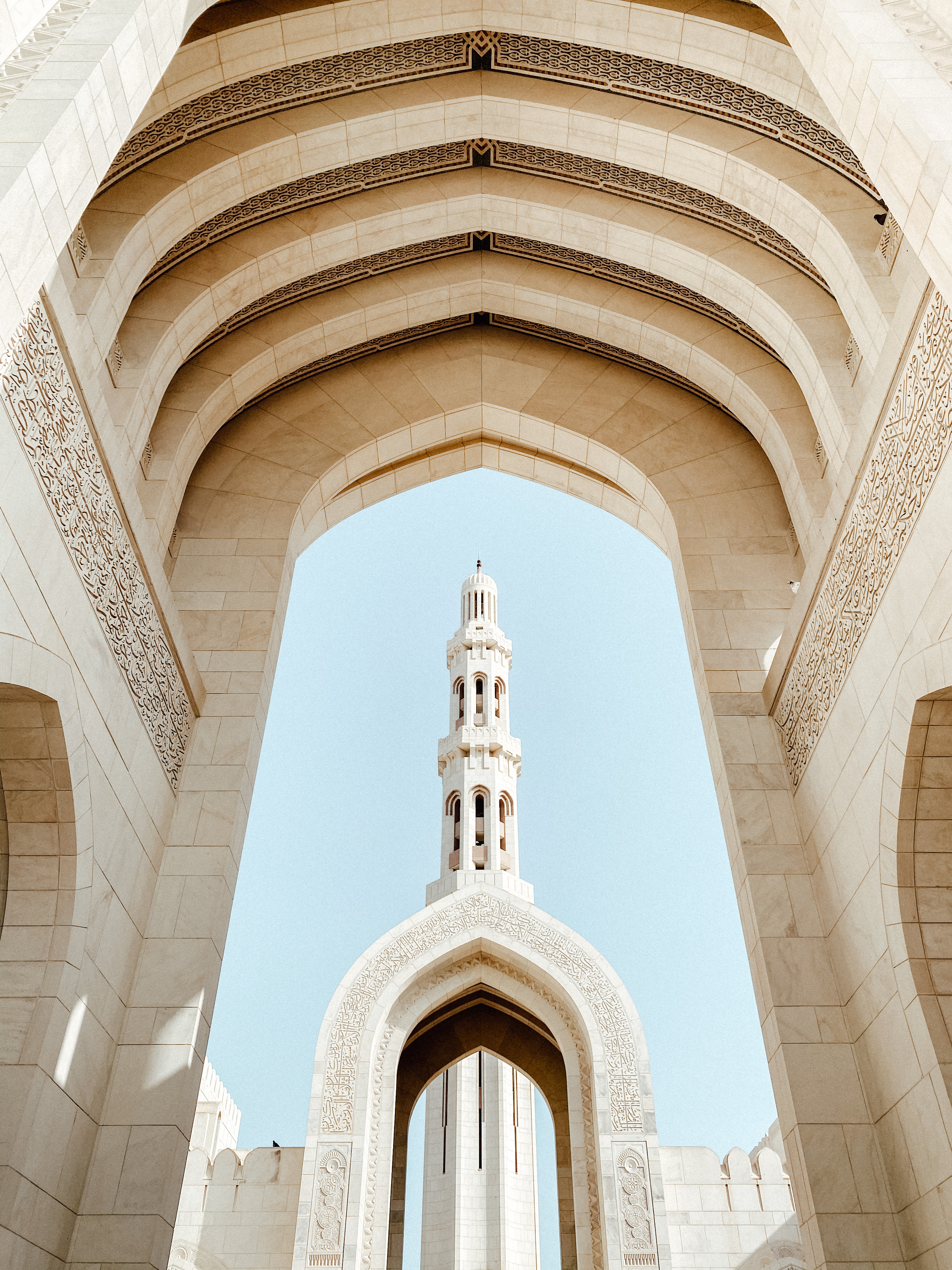
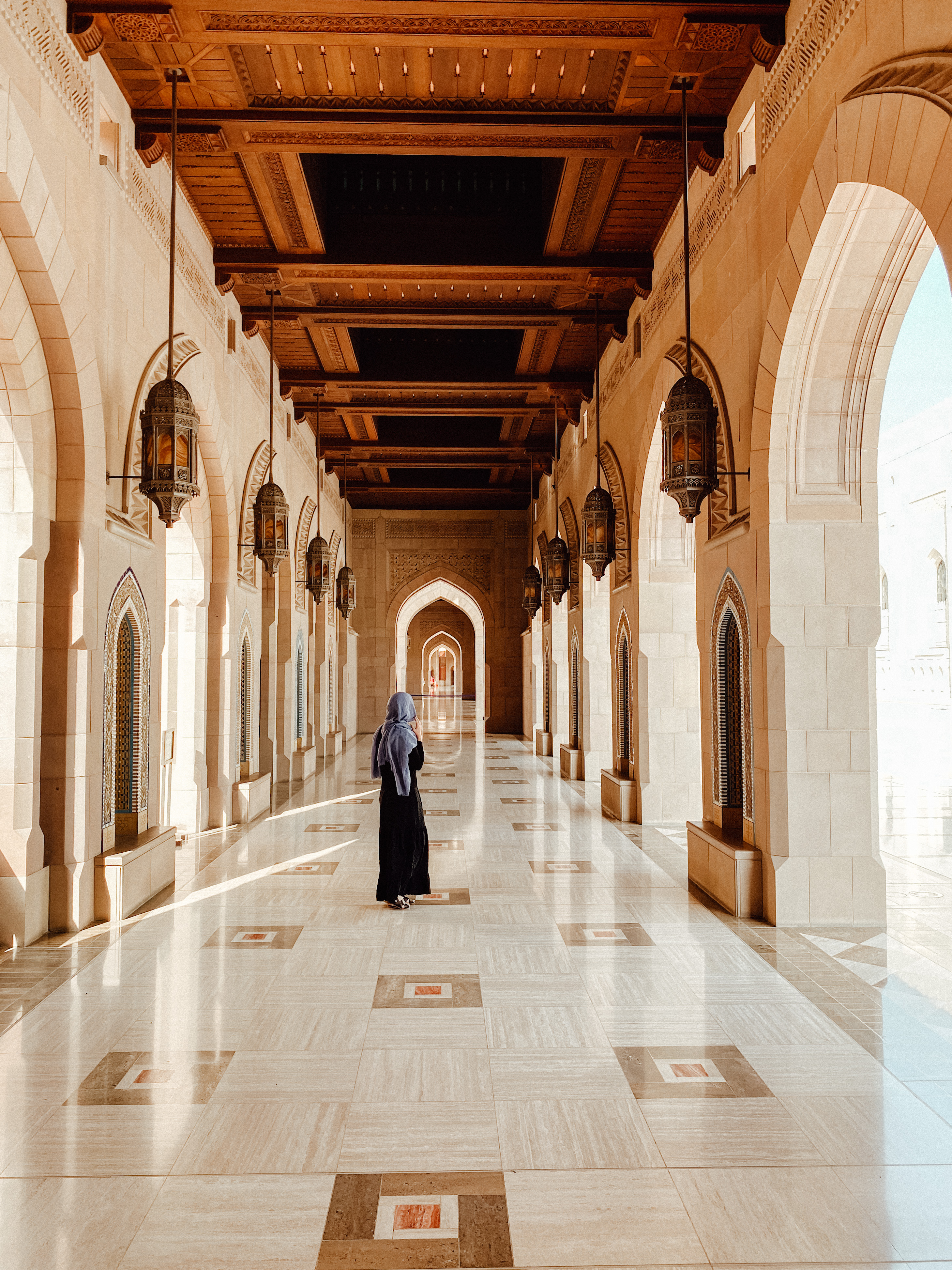
GO IN SEARCH OF CULTURE AT THE ROYAL OPERA HOUSE
Muscat’s Royal Opera House was only opened in 2011, and is known as one of the most architecturally attractive buildings in the city.
If you want to go further than the main hall, you will need to book onto a tour. Tours run daily, and cost 3 OMR per person. You can’t book online, but you can email or call them to reserve your place in advance.
The season at the Opera House runs from September to June, and tickets are available to buy as soon as new productions are announced. There is no in-house company, so performances are from a range of international opera and dance companies. Unusually for Oman, tickets can be bought in advance online. The Opera House has a formal dress code, so be sure to dress up if you attend a performance.
I recommend visiting at sunset, when the walls glow a beautiful golden colour and reflect on the marble floor like water. The French café in the courtyard – Fauchon – is a good spot for breakfast or a sunset mocktail.
SOAK UP THE HISTORY IN OLD MUSCAT
At the eastern end of Muscat, around a small bay, is an area known as “Old Muscat”. This is the original settlement of Muscat. It has a different feel to the rest of the city – offering a much quieter and a more historical vibe. There are also a number of good hikes in the hills above Muttrah – a full guide to Oman’s best hikes is coming soon!
At it’s centre is the Al Alam Palace – the Sultan of Oman’s ceremonial home. It was built in 1972 as a way to showcase contemporary Islamic design. The palace isn’t open to the public, but you can peer in through the iron gates and admire the overflowing flower beds out front. Just to the right hand side as you approach the palace, is a remaining section of the original city walls and three large watchtowers.
It is also possible to view the palace from the back, and it’s gardens backing onto the sea. It’s a lesser known spot, and you need to know it’s there to find it. Especially as the road feels a bit “official” and like you aren’t allowed to enter! The what3words for the parking are: ///solar.panel.walnuts
National Museum – opened in 2015, this museum showcases Oman’s history and culture. It has become one of my favourite museums – I think it fascinating, and the building itself is beautiful. There are fourteen permanent galleries over 13,700 sqm so you will want to allow plenty of time to explore. If the mosque is the one thing you must do in Oman, I think this is the second!
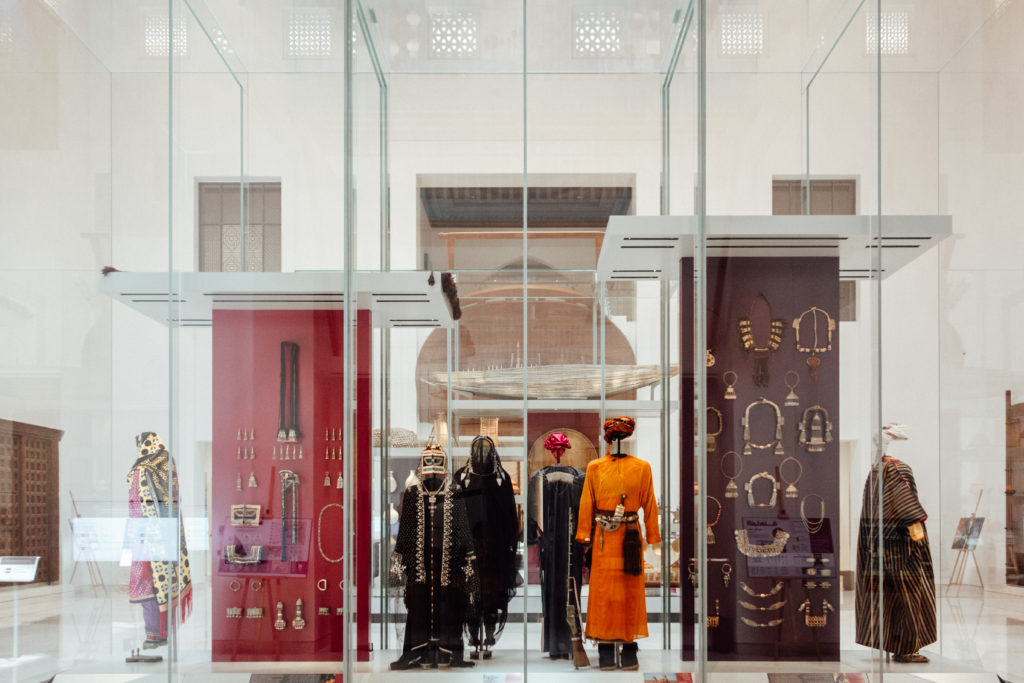
I particularly enjoy the display of traditional Omani dress – the colours are so vibrant. They also have a number of ‘batoola’ on show. It is a traditional face covering typically worn by Bedouin women from the Persian Gulf region. Originally worn as protection from the desert climate to help keep hot sand and dust out of the nose and mouth, the batoola also serves modesty garment. It was historically worn by young women before marriage as a sign of coming of age. Today it is only really worn regularly by the older generations, with young women sometimes wearing one for a special occasion.
If you can’t make it to the Salma Plateau or Al Ain during your visit to Oman, this is the place to see a beehive tomb.
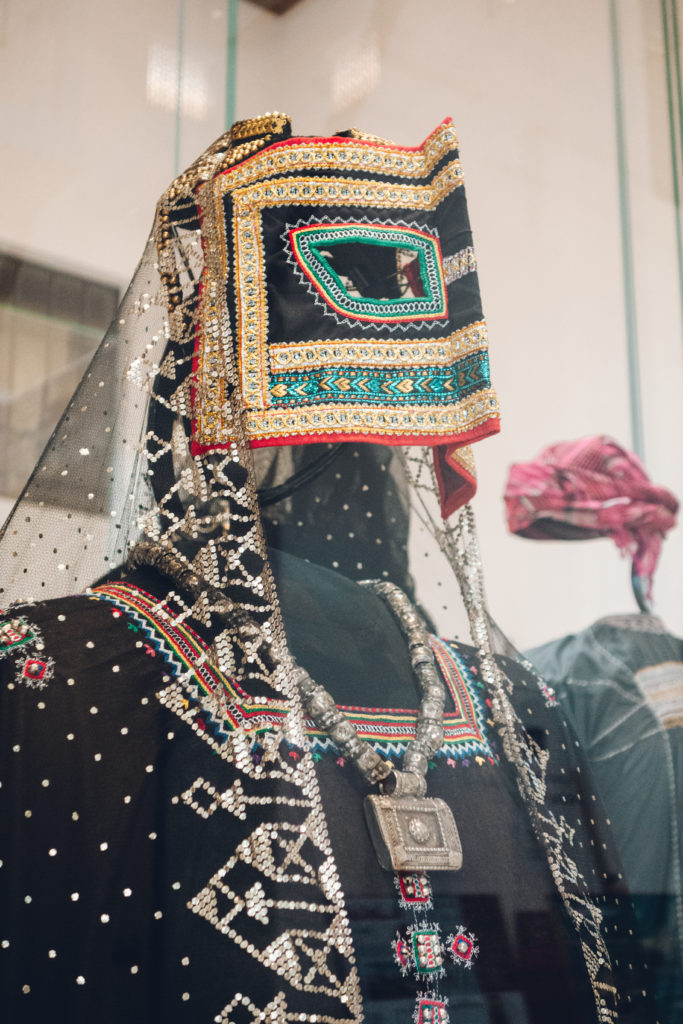
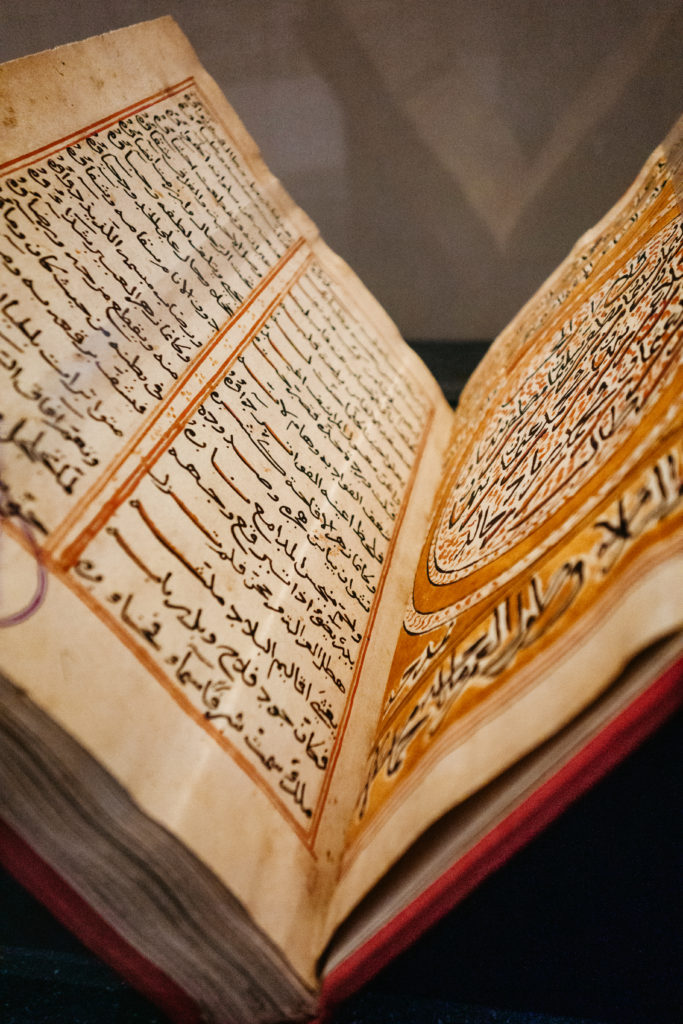
Muscat Gate – formally the official entrance to the city of Muscat, right up until the mid-twentieth century the gates were locked every night, three hours after sunset. There is a small museum inside the gate but to be honest, unless you are really into gates (each to their own), I recommend simply admiring the gates as you drive underneath on your way in or out of Muttrah.
Bait al Zubair – offering a lovely break from the heat, this beautifully restored town house has exhibits spread out over three buildings showcasing Omani culture and crafts. The Zubair family still own and run the museum. There is also a lovely café, serving Omani food on site.
A (very) Potted History of Muscat
The first recorded reference to Muscat, comes from the 2ndC geographer, Ptolemy, although archaeological evidence form burial sites puts a settlement here are far back as the 6thC BCE. At that time the small harbour was all but inaccessible by land, and the first settlers – Arab tribes from Yemen – most likely arrived by sea.
The tribes converted to Islam in the 7thC, but it wasn’t until the 9thC that the First Imamate was established. Over this period the powerful local Azd dynasty (one of Arabia’s largest tribes) grew Muscat into an important trading port, but could not stop skirmishes between tribal factions. This unrest offered an opportunity for the Abbasids of Baghdad to conquer Oman. They ruled until the 11thC, before being driven out by the local Yahmad and Azdi Nabahinah tribes who continued to turn Muscat into a prosperous coastal port.
By the early 16thC Muscat had become a thriving centre of trade in the Indian Ocean, used for merchant ships bound for India. Unsurprisingly this attracted the attention of the European powers and in 1507 the Portuguese conquered the city. They ruled until 1650 when the city feel to the Ottoman Empire. It wasn’t until 1741 when the Omanis regained their independence and started their so-called Golden Age. During this period Muscat once again became an important naval and economic power, with the Al Bu Said dynasty presiding over an empire stretching all the way down the east African coast to Zanzibar. Inter-tribal fighting saw the control of the Al Bu Saids decline and the empire slowly fell apart. Throughout the 19thC tensions with the Imams of the interior – side lined by the growing wealth of the coast – grew, with Muscat and Muttrah coming under attack in 1895 and 1915.
A British backed ceasefire held a fragile peace, but conflicts between the interior tribes and the Sultan continued into the 1950s, eventually escalating into the Dhofar Rebellion of 1962. It wasn’t until 1970 when Sultan Qaboos bin Said overthrew his father that the tribes untied under a single rule across all of Oman, based out of Muscat. He set about an ambitious programme of modernisation – there was a mere 6 miles (10km) of paved roads in the whole of the country. Now, there are nearly 30,000km and still building. Sultan Qaboos oversaw the construction of a new port, an international airport and a commercial district, seeking to provide new commercial and tourism opportunities for the city.
Like its Gulf neighbours, oil revenues have been key to Oman’s development. Oil was first discovered in Oman in commercial quantities in 1964, and now accounts for around two-fifths of the country’s GDP. Muscat remains a major port city, for both goods and cruise ships. Muscat today has all the five star hotels and hipster brunch spots you would expect to find in neighbouring Dubai, but has also retained a strongly traditional character. There is even a ban on building skyscrapers in the city. Dhows sit alongside mega yachts and oil tankers in Muttrah port, and old souqs and coffee shops rub shoulders with glass fronted malls.
EXPLORE MUTTRAH
If you have seen a photo of Muscat, you will almost certainly have seen a photo of Muttrah! The heart of the old Portuguese colony, come in the late afternoon to promenade the Corniche and explore the maze of streets around the souq. Muttrah Fort, built by the Portuguese to defend their colony is free to enter, and fantastic views back down the Corniche. It is my favourite area of Muscat, as I love the sense of history and the more laid back vibe.
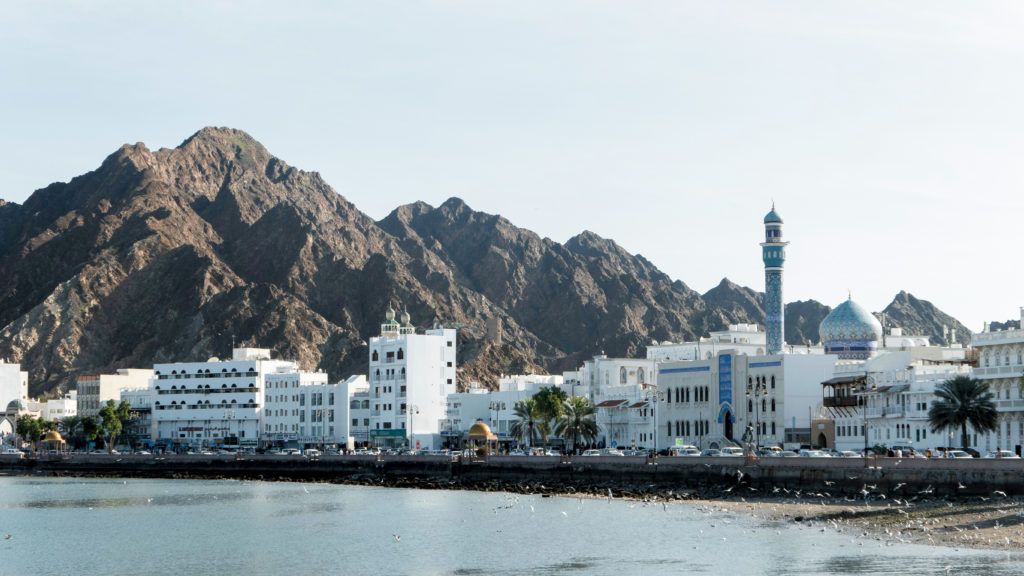
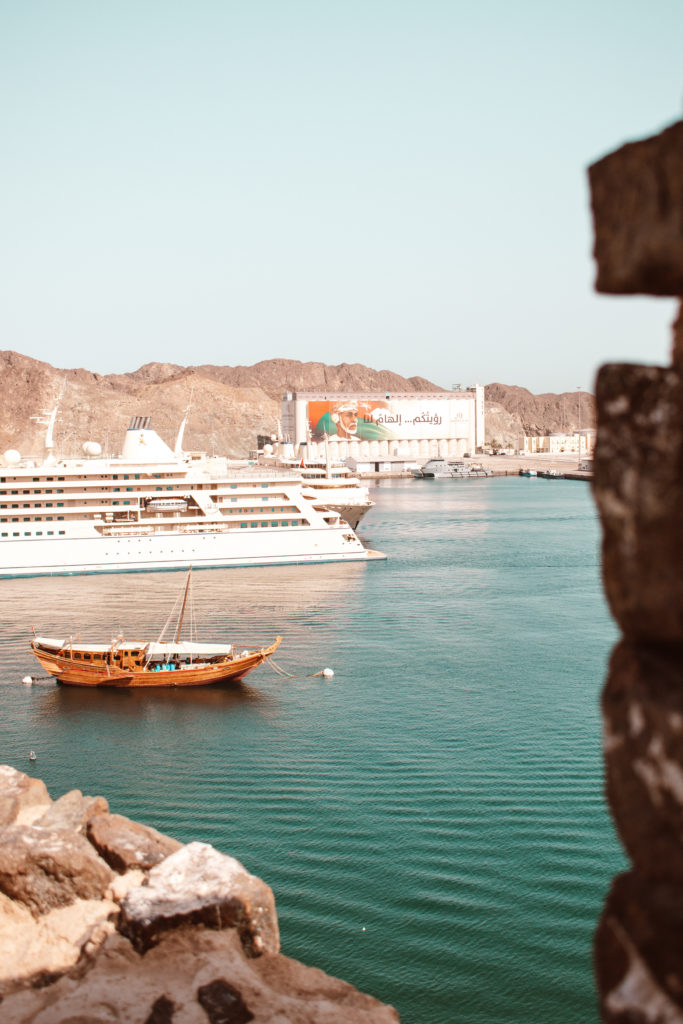
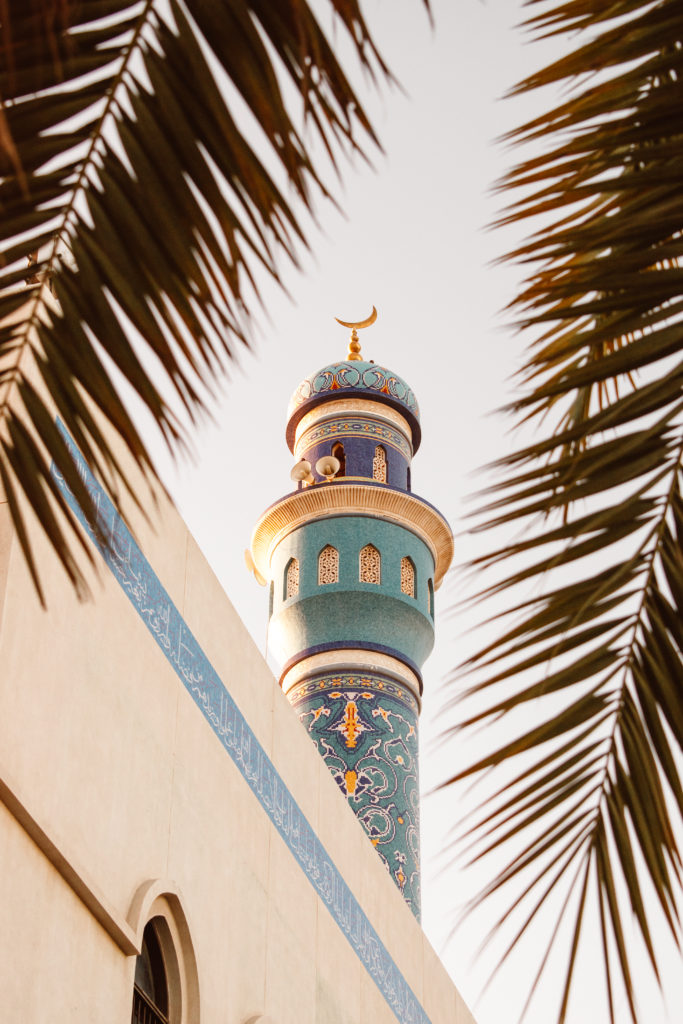
Muttrah Souq – incense burners, frankincense and embroidered fabrics galore in one of the region’s oldest souqs. If you are visiting as part of a wider road trip, I actually prefer Nizwa and Fanja markets as they feel less touristy. Muttrah is a good place for souvenirs if you are only on a short trip, but I find the vying for attention from the (friendly) stall holders can get tiring.
There are two parts to Muttrah Souq. The more “touristy” half, selling classic Omani souvenirs such as incense burners, frankinsnce, silver work, coffee pots, and various antique type trinkets. The other half is a more “local” market, selling children’s toys, clothes and kitchenware. The Souq is a bit of a labyrinth, and it can feel easy to get lost. Broadly, if you follow the streets leading downhill, you will get back to the Corniche. Once you enter through the domed arch on the Corniche, follow the route up to the central intersection, with a stained glass dome ceiling. Generally shops selling the same kinds of things in the same areas, so all the incense shops are clustered together etc.
If you are after a more relaxed shopping experience, I highly recommend the wonderful Omani Heritage Gallery on the Corniche. It is an NGO supporting craftspeople to maintain traditional skills. Everything is made in Oman, and profits go directly to the artists. Alternatively, our house is starting to overflow with lovely pieces we have bought from a small shop on the corner between the mosque and the souq. Run by the same man for over 30 years, it is a treasure trove of well made Omani souvenirs and antiques.
Fish Market – from giant tuna to the most enormous prawns, this is a fantastic market! Aside from being one of my favourite places to shop for dinner supplies, it is also interesting to visit. All of the stalls are run by Omanis, and you can see the fishermen bringing in the catch daily just in front of the market. Go early to see the market in full flow – the stalls will be emptying by about 10am.
SPEND A DAY – OR NIGHT – AT THE BEACH
Al Qurum – stretching for 2.5miles (4km) parallel to the centre of the city, this is one of the longest (and busiest!) beaches in Oman. Many sections are fringed by palm trees, and in the quieter spots it can be hard to believe you are mere metres away from excellent flat whites and sleek malls!
Bandar al Khirian – (there are endless spellings so search using the Arabic if in doubt: بندر الخيران) – made up of a series of rugged khors (inlets) about 15 miles south east of the city. This is one of the most popular weekend day trips for Muscat’s residents. A long afternoon kayaking, snorkelling and BBQing on the beach are virtually obligatory here – many also choose to camp overnight.
Bandar is also a popular diving spot – check out the Octopus Diving Centre if you want to book a trip. On land, there are numerous hiking routes on the cliffs above the bay. There are no facilities at Bandar, so bring a picnic, plenty of water and something to offer shade from the sun. If you want to rent kayaks, send a message to Aroun (+968 9887 2029).
Slightly further down the coast, the long white sands of Sifah are an equally popular camping and BBQ-on-the-beach spot.
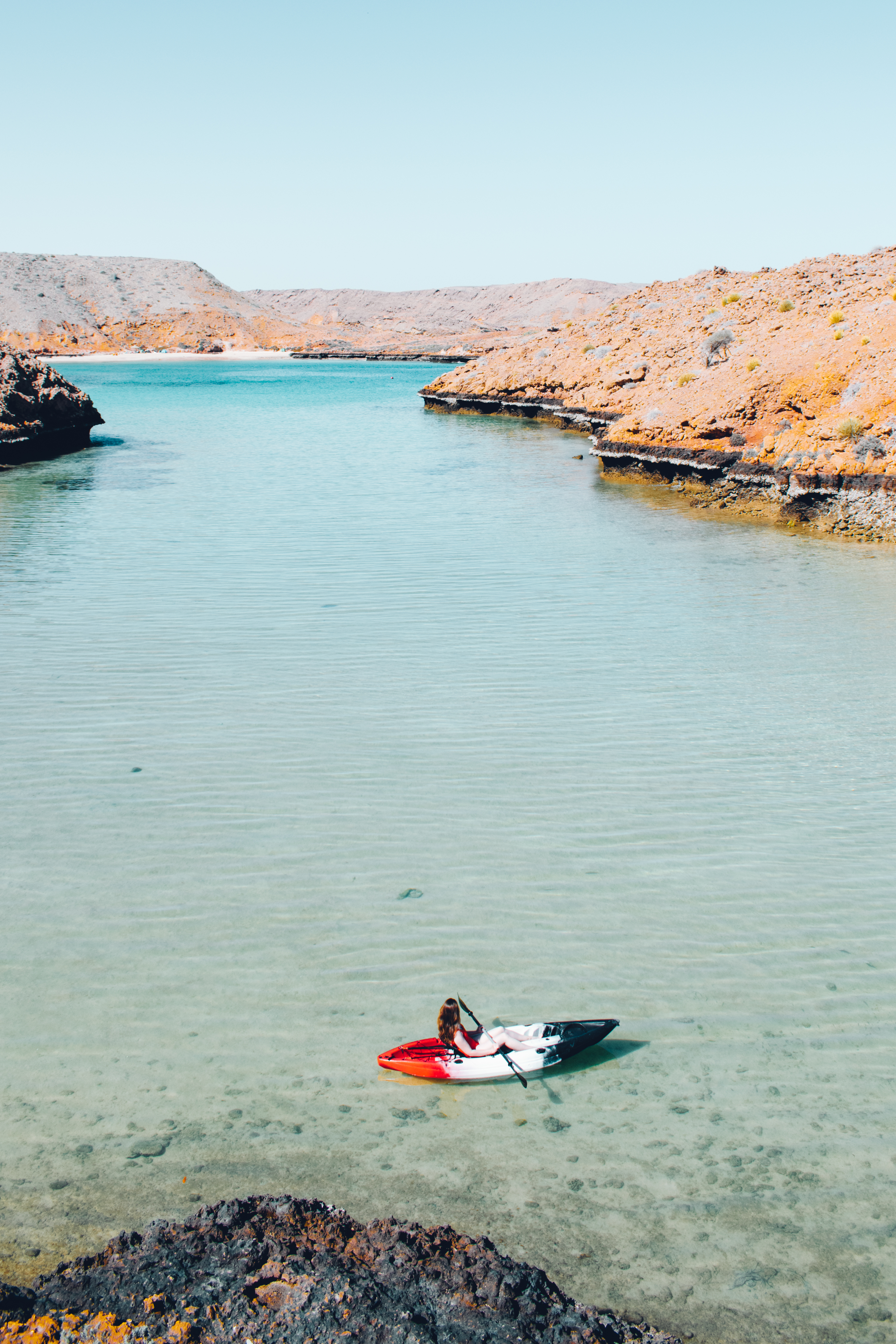
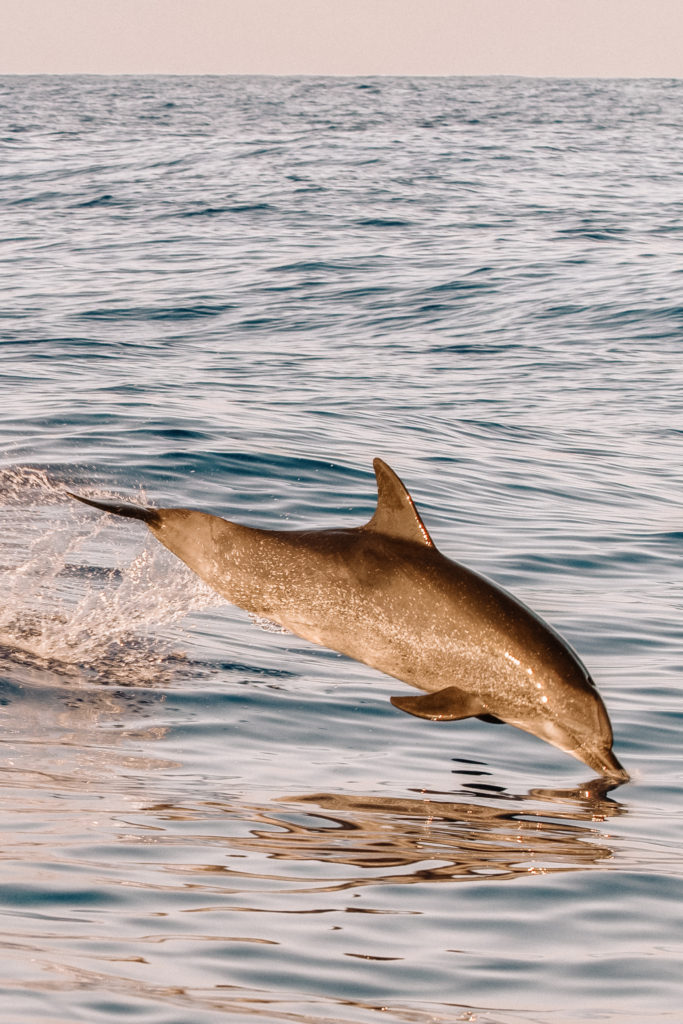
Ad Daymaniyat – located a hour off the Muscat coastline, this string of beautiful islands are an incredible day trip from Muscat. From November-April you can obtain a permit (either privately or through a tour company) to camp here overnight. Check out Daymaniyat Shells if you want to plan a trip – they are a wonderful company with a real environmental and sustainable ethos. Check out my full guide to the Daymaniyat Islands to plan your visit.
Given the amazing waters around the Muscat coast, it is no surprise that dolphin and whale watching trips are hugely popular. Daymaniyat Shells also offer trips. The best time to go dolphin watching is between October and May, whilst the famous whale sharks take up residence off the coast in September and November.
ESCAPE TO THE GREEN SPACES
Lush green parks aren’t what immediately come to mind when you picture the Middle East, but Muscat still has a few places to enjoy nature and spend a tranquil hour or two. These are some of the lesser-known bits of the Omani capital, so you will get to see a side of the city few tourists know.
Al Ansab Wetland – home to over 300 species of bird, butterfly, fish and flora over 18 sq km, and four lagoons. It is a good example of how industry can work alongside nature – the nearby water treatment plant is working with the government to protect the wetland from pollution and reduce carbon emissions. (Sun-Wed: 7am-3:30pm).
Qurum Natural Park – known as the “lungs of Muscat”, this park has a boating lake, a rose garden and winding shaded walkways. It is a lovely place for a sunset stroll, when the pergolas, 4,500 seat amphitheatre and central fountain are lit up.
Qurm Nature Reserve – one of the largest areas of natural mangrove forests along the east coast of the Arabian Peninsula, supporting 40 fish species, 194 species of birds, 27 species of crustaceans, and 48 species of molluscs! Entrance is prohibited without a license, but Wave Summit have recently been able to offer kayaking trips in the reserve. If this is too energetic for you, both Le Makan Café and Tche Tche have views over the mangroves, and are a nice spot for sunset.
WHERE TO STAY
The Chedi (£££) – undoubtedly Muscat’s most visually stunning hotel – traditional Omani architecture and cool courtyards make this a tranquil and serious luxurious base in the centre of the city. It is proudly home to the Middle East’s longest pool, and probably the most beautiful gym I have ever seen! The basic rooms are a bit pricey for what they are, so always make sure to check out the current offers or upgrade to a club room if you are able to. Check out my full review.
Al Bustan (£££) – who wouldn’t want to stay in a Sultan’s actual palace?! The ninth floor of this hotel is reserved for the exclusive use of Sultan Haitham. This is my ultimate Muscat beach hotel – try and get a lagoon room. This Muscat institution may seem a bit out of town, but offers free shuttle services to the Grand Mosque and Muttrah for guests. Even if you aren’t staying come for the gorgeous afternoon tea (one between two is plenty), and to marvel at the cathedral like foyer. Check out my full review.
W Muscat (£££) – aimed at a younger crowd, the pools at this modern design hotel are a popular weekend hangout for Muscat’s expats. Rooms are spacious and many have great views over the Gulf of Oman. Well located for both the main tourist attractions and dining options (within walking distance) in the popular area of Shatti Al Qurum.
Levatio Suites (££) – unbelievably good value in a city awash with five star hotels! Serviced, self-catering apartments with a rooftop swimming pool overlooking the city and Sultan Qaboos Mosque.
Royal Tulip Muscat (££) – excellent mid range option, close to Sultan Qaboos Mosque with a rooftop swimming pool. Breakfast can be a bit hit and miss.
Behlys Villa (£) – very different to Muscat’s other accommodation offerings, this sweet guesthouse offers bed and breakfast with a really homely feel. Rooms are clean and the dappled garden is a lovely place to sit after a busy day sightseeing.
WHERE TO EAT
Bait al Luban – this is one of my absolute favourites. Directly opposite the Fish Market in Muttrah, this wonderful restaurant serves traditional and contemporary Omani food. You can choose to eat traditionally in one of the side rooms – sitting on large floor cushions – or on the beautiful balcony overlooking the Corniche. Go hungry so that you can try everything!
Dukanah Cafe – only a few hundred metres form the Sultan Qaboos Mosque, it is a great breakfast spot after a visit. Portions are generous and designed for sharing, and offer traditional Omani food at very reasonable prices. The interiors replicate an old Muscat house.
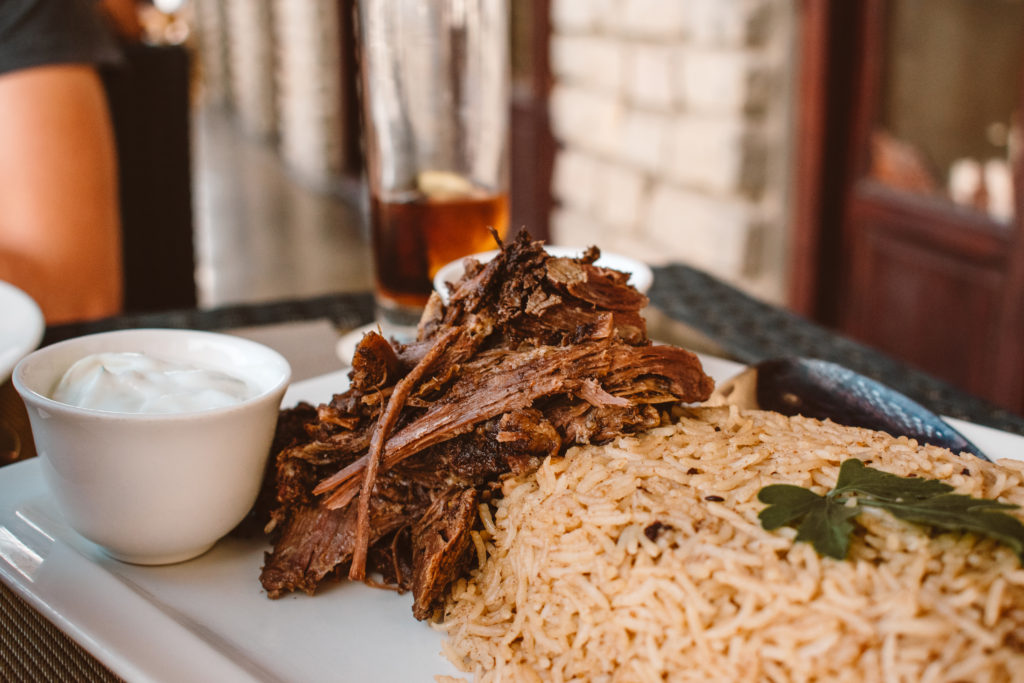
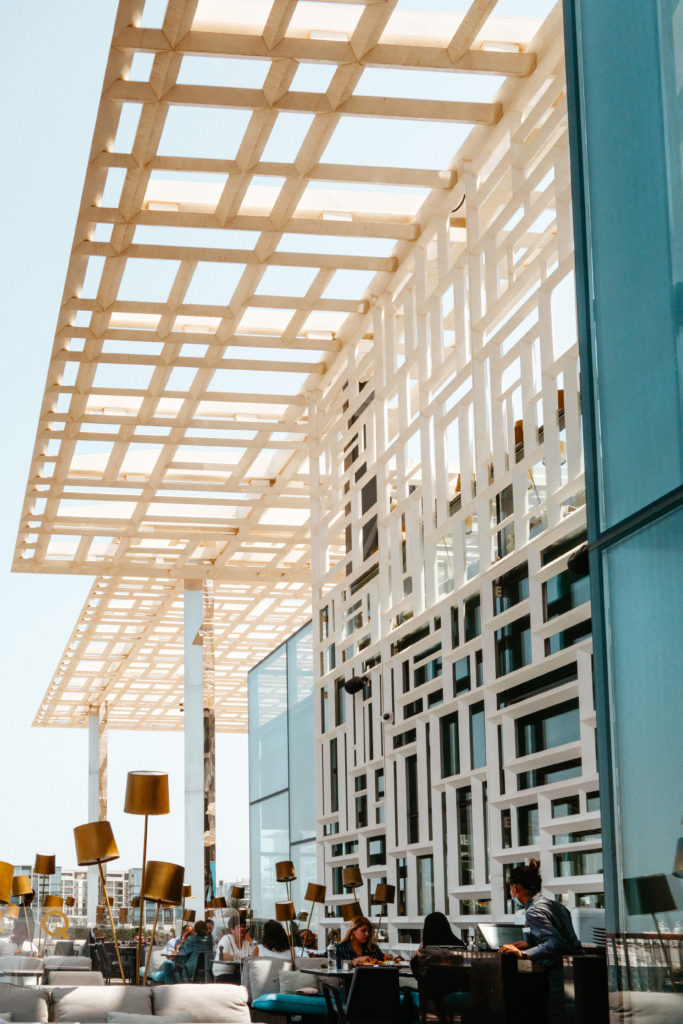
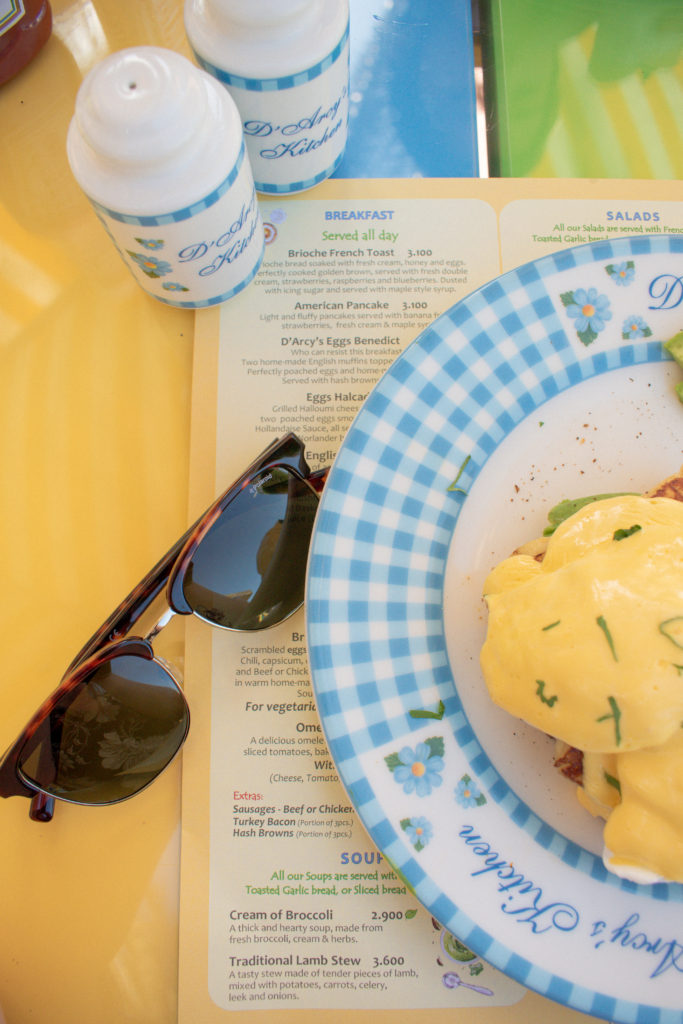
B&F Roadside Diner – ££ – The Husband’s favourite! American style burgers, sliders and loaded fries. There are two locations but stick to the one in Boulevard Mall next to the Royal Opera House – the food at the Al Mouj branch is very average. Try the Fuji fries for something a bit different. It gets very busy on Friday and Saturday nights.
Turkish House Restaurant – don’t let the slightly shabby exterior put you off. There are three options all next to each other. The café on the right (as you look at them) is the place for a fantastic shawarma, whilst the original dining room is at the back. The muhammara (spicy Turkish red pepper and walnut dip) is some of the best I have had. The fish is always incredibly fresh and the shrimps so large they are more like lobsters! Ask the waiter for advice on which fish to pick depending on your numbers, and you can choose how it is cooked.
Nana’s – this family run restaurant is consistently one of the most popular in Muscat. Service can be a bit hit and miss, but who doesn’t love a sea view with their breakfast?
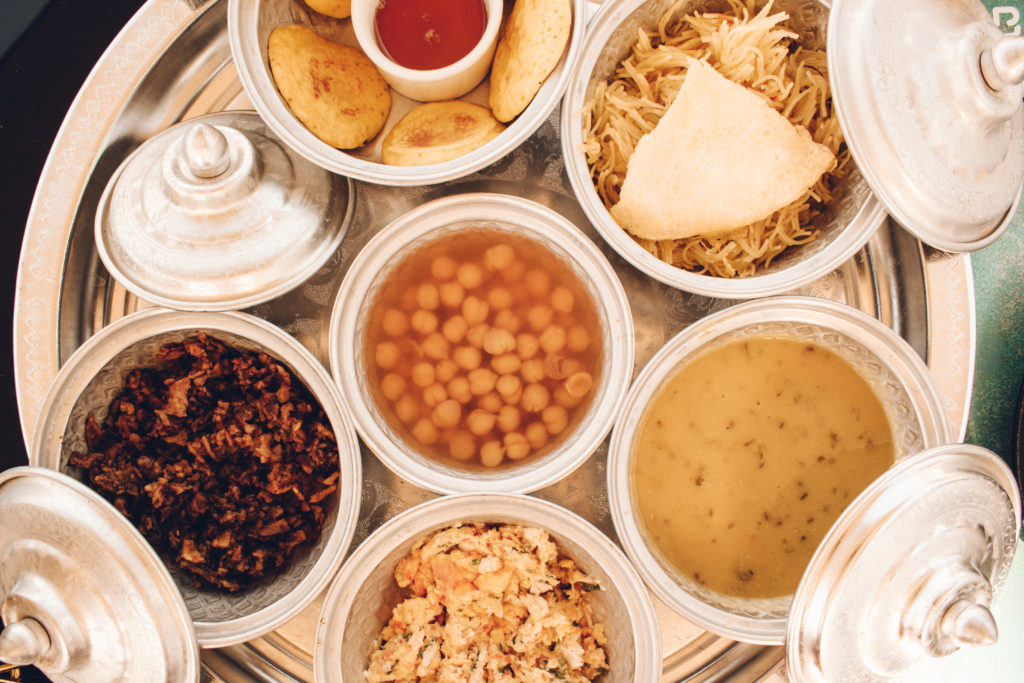
On The Wood – seriously great Lebanese, including my favourite, smooth hummus topped with marinated beef. They also do Italian dishes – which always seem popular with Omani customers – but we have never been able to resist the Lebanese!
Begums – incredible Mughal cuisine. Their menu of biryanis is almost endless, and as a paneer lover I adore the variety on their menu. More generally, if curry is your thing, head to Ruwi – the commercial district – for amazingly cheap, excellent Indian cuisine.
Al Mouj (The Wave) – this residential area northwest of the airport has a great selection of cafes and restaurants. I often enjoy spending a morning reading a book in one of the cafes along The Walk. My top picks for food are Huqqa – huge sharing breakfasts and tasty Turkish classics; and Mani’s – an all day breakfast spot founded by three Muscat mums. The branch at Al Mouj is a lovely weekend brunch spot right on the marina – you can window shop for yachts whilst tucking into an enormous plate of French toast!
Hopefully this guide has shown you a new side to the Omani capital. Let me know in the comments if it has persuaded you to visit – or if there are other places you suggest I try out in Muscat!
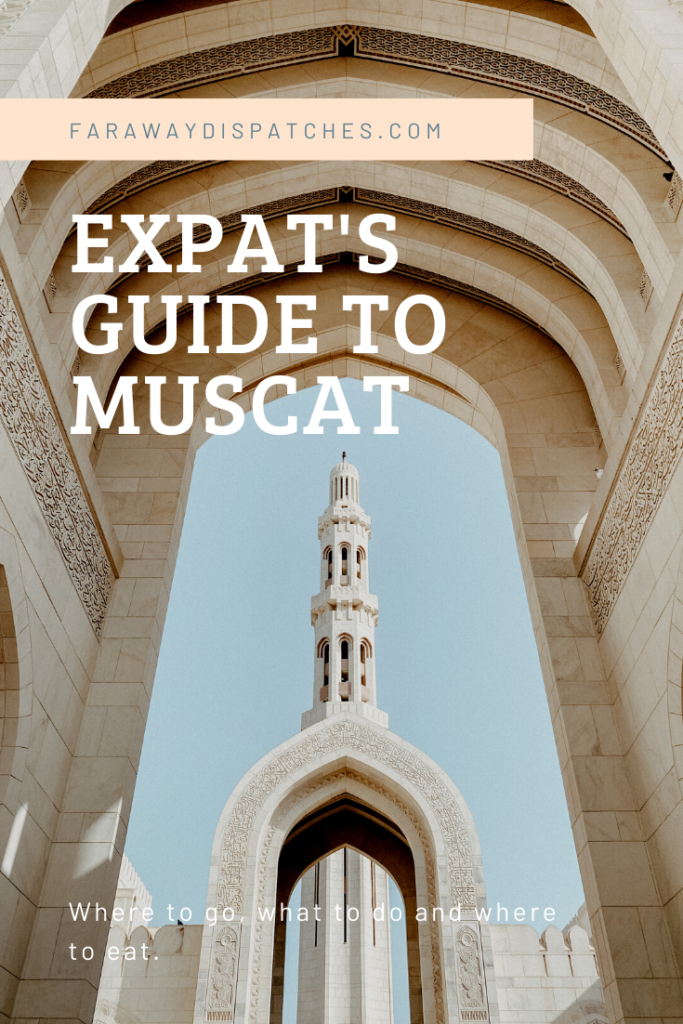
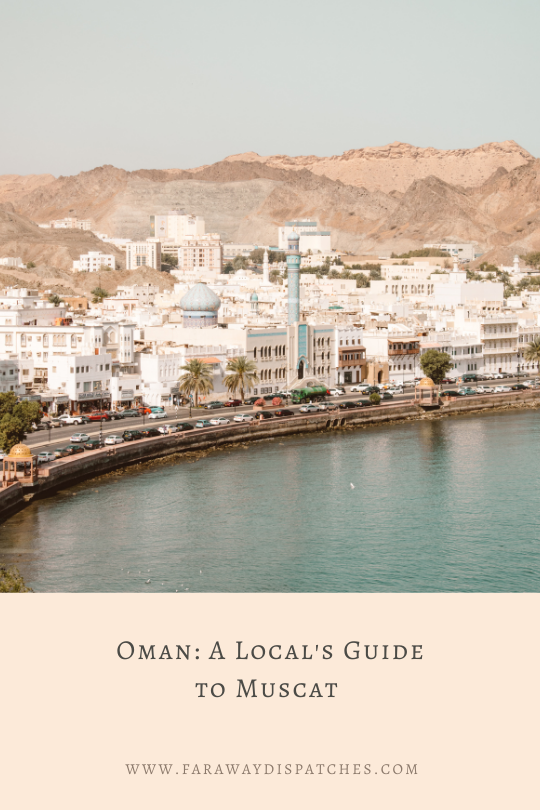


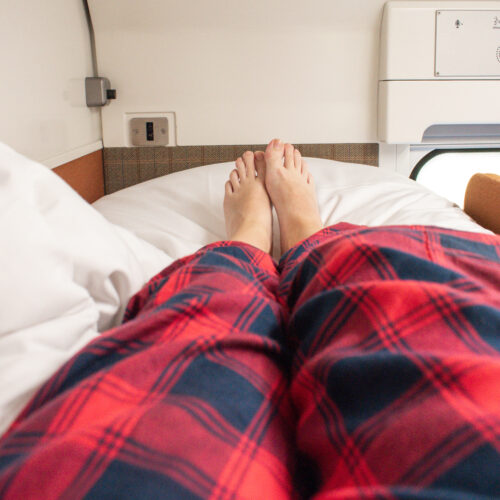
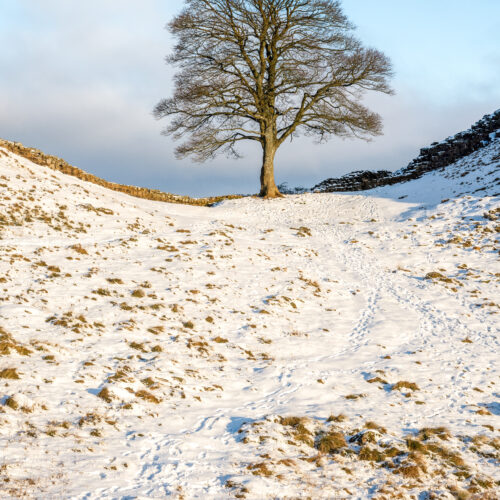

Leave a Reply